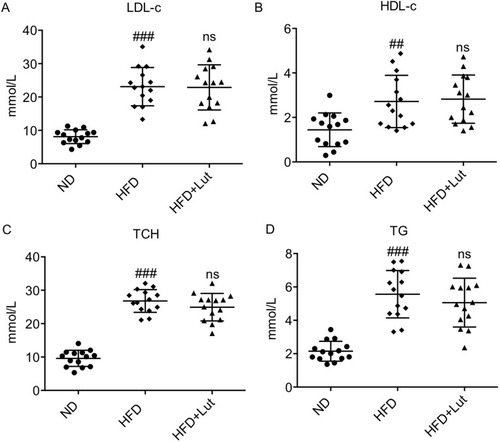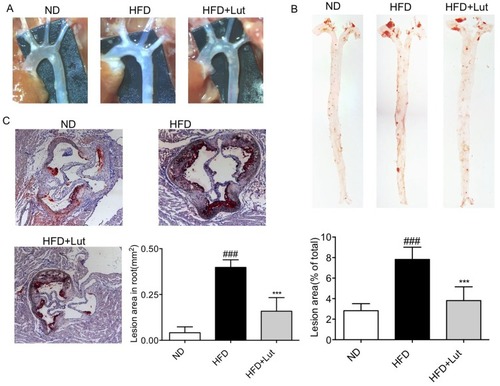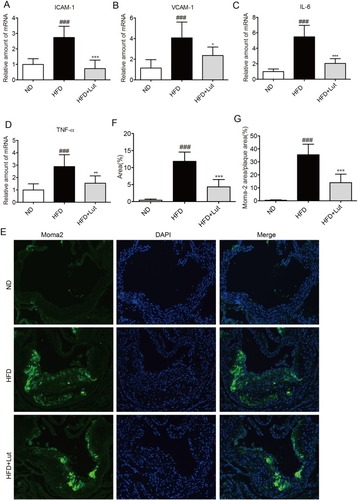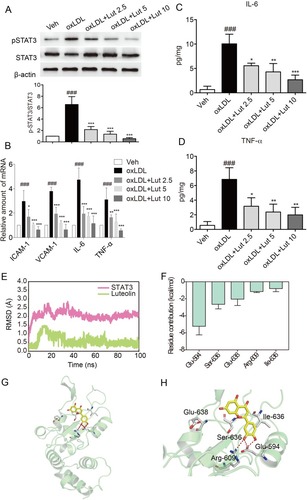Figures & data
Table 1 Primers Used For Real-Time qPCR Assay
Figure 1 Luteolin administration did not affect hyperlipidemia profile in HFD-fed ApoE-/- mice.

Figure 2 Luteolin administration prevented atherosclerotic plaque development in HFD-fed ApoE−/− mice.

Figure 3 Luteolin administration inhibited inflammation in atherosclerotic aortas.

Figure 4 STAT3 phosphorylation in aortas of HFD-fed ApoE−/− mice was increased.

Figure 5 Luteolin suppressed inflammation in oxLDL-stimulated macrophages.

Figure 6 Luteolin suppressed oxLDL-induced inflammation via inhibiting activation of STAT3.

